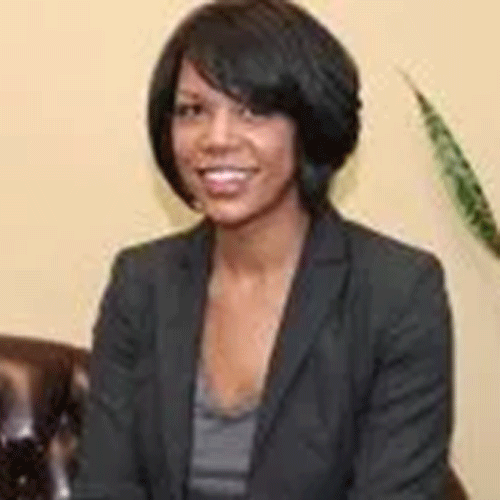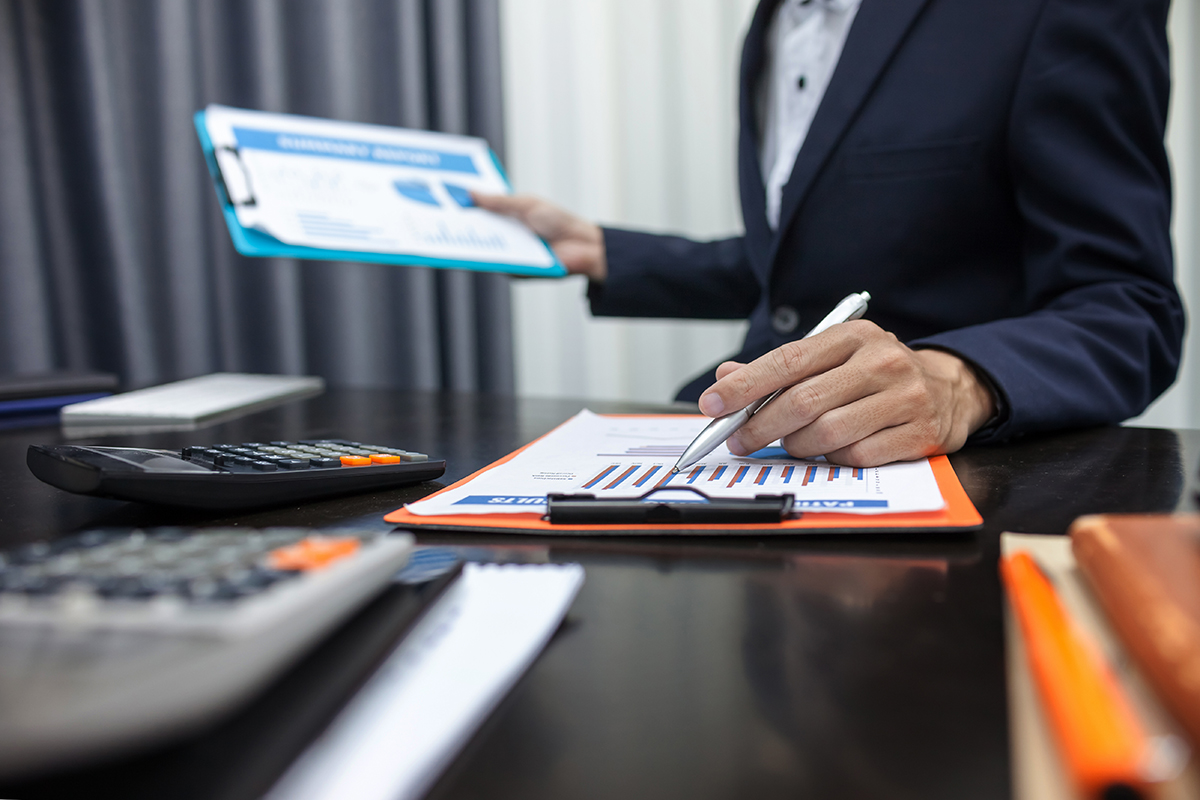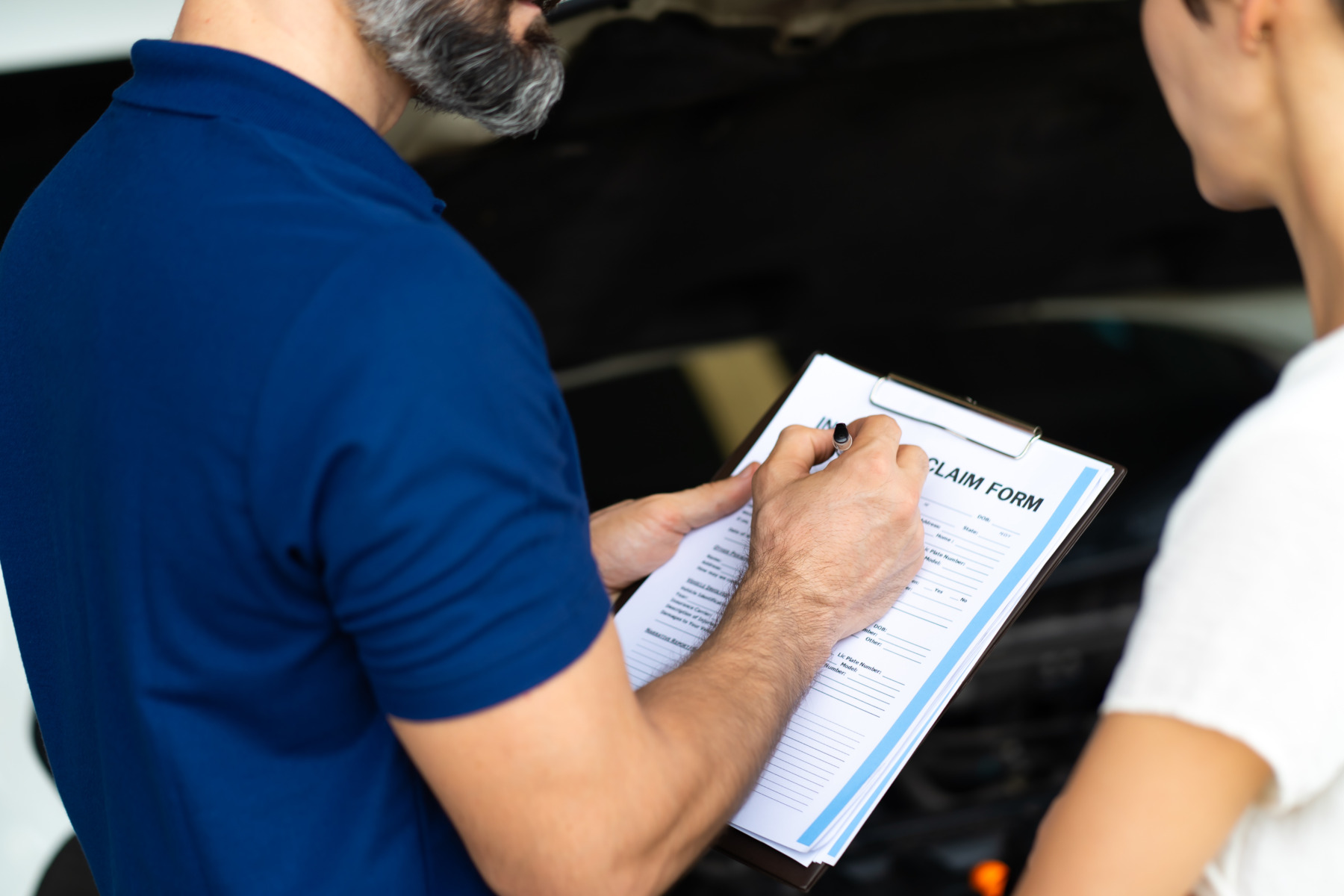A lab report is a crucial document in any scientific inquiry. They provide the description and analysis of a laboratory experiment performed to explore a scientific concept. Whether you are taking a biology, physics, or chemistry course, the report is a prerequisite to finishing the course. These reports are formal documents and should be written accordingly.
Types of Lab Reports
There are two formal types of lab reports: internal and external.
Internal lab reports
These reports are primarily written for use within a company as well as within educational institutions and research centers, thus, the writer is addressing fellow employees who are probably familiar with the methodology and equipment used in the experiment. Since the target audience of an internal report is within the same organization, the language is less formal, and the report itself focuses more on the results.
External lab reports
Reports can also be prepared for external use. These kinds of reports are written for clients who are not familiar with the methodology or equipment used in the process. Therefore, an external report is more formal than an internal one.
When writing this report, the client might have requirements about the specificity of the format used, methodology, and equipment. It is worth noting that these reports are often confidential as the clients have paid for them and are thus the owners of all the information they contain.
Free Templates
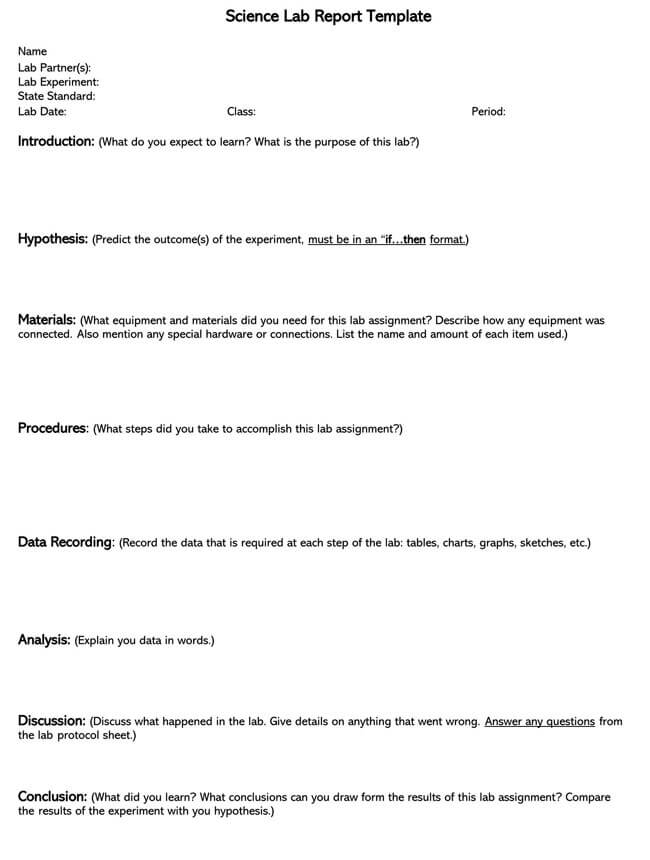
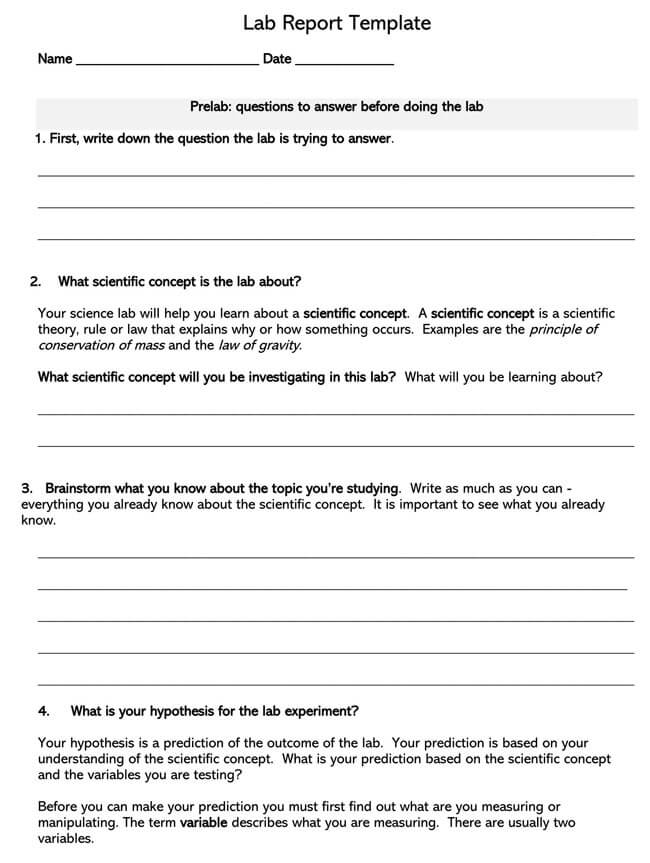

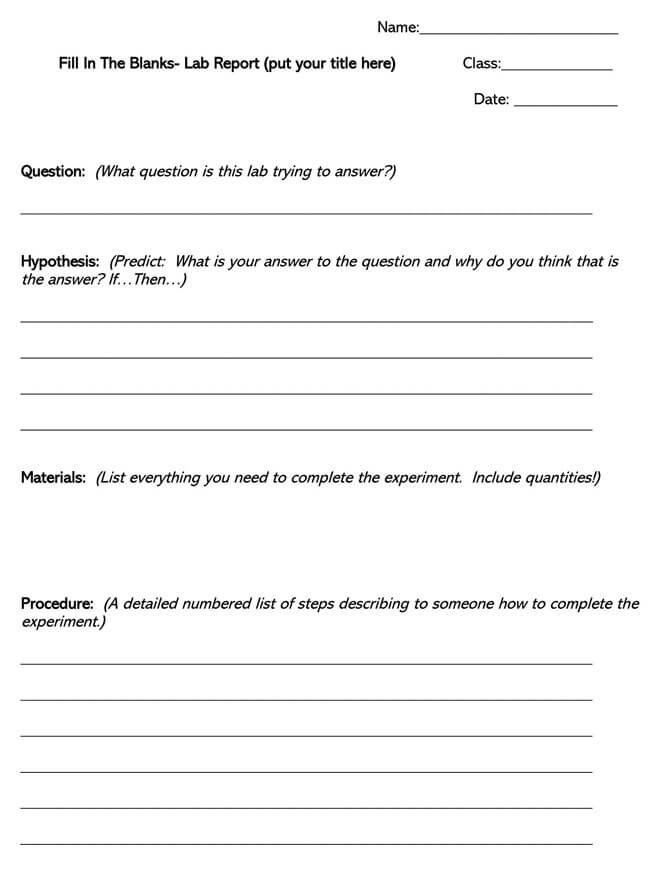
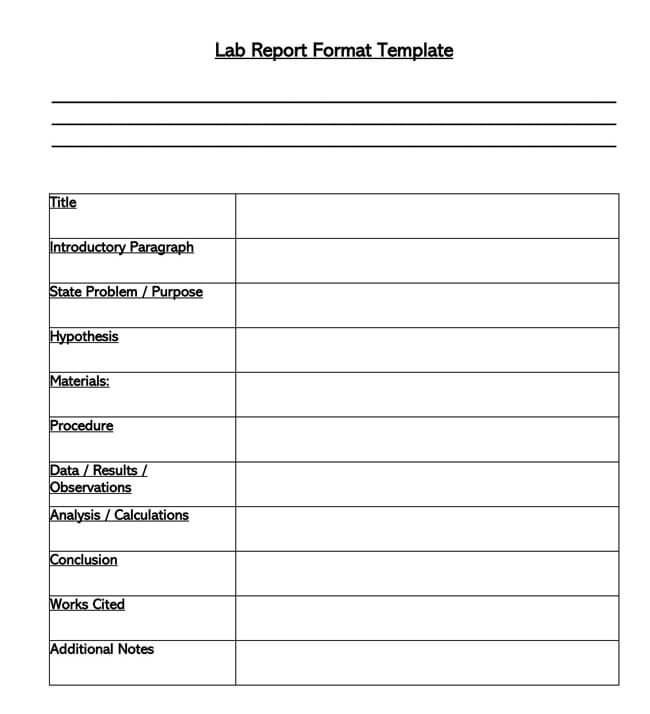
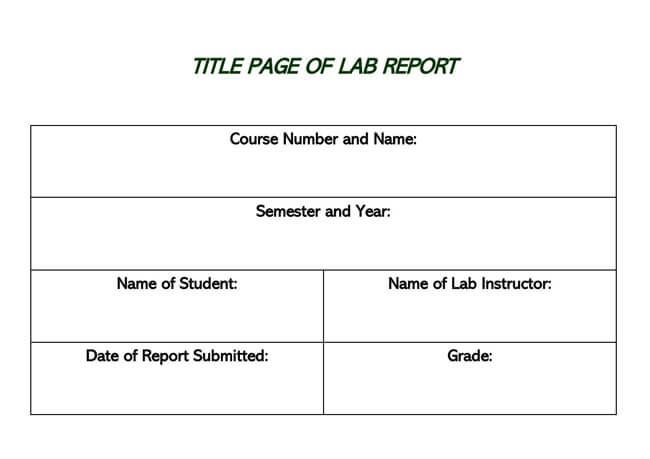
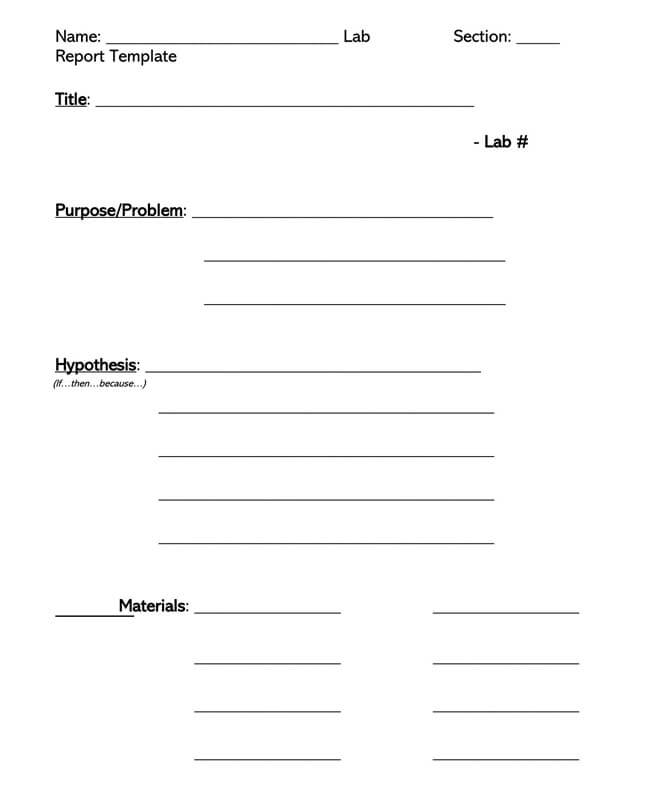
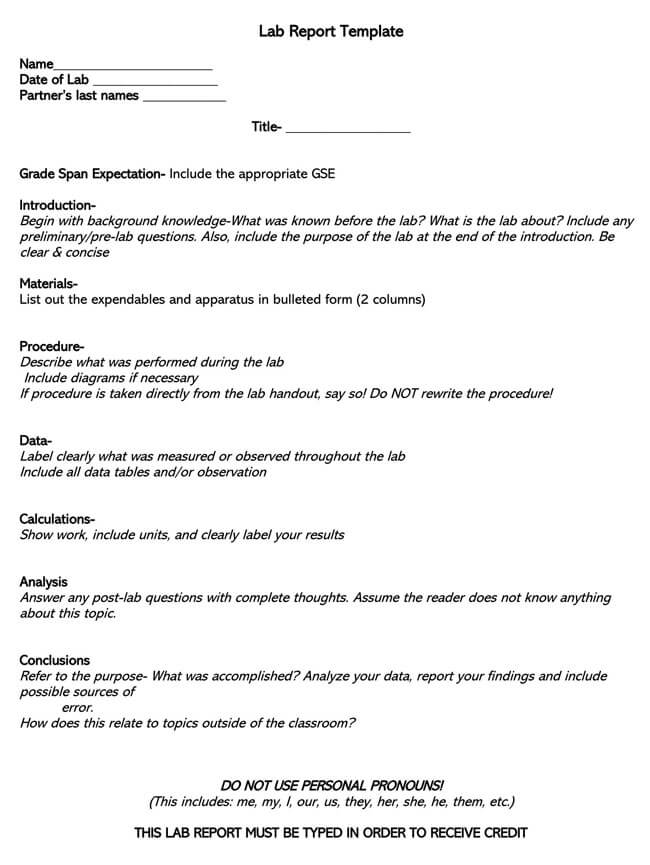


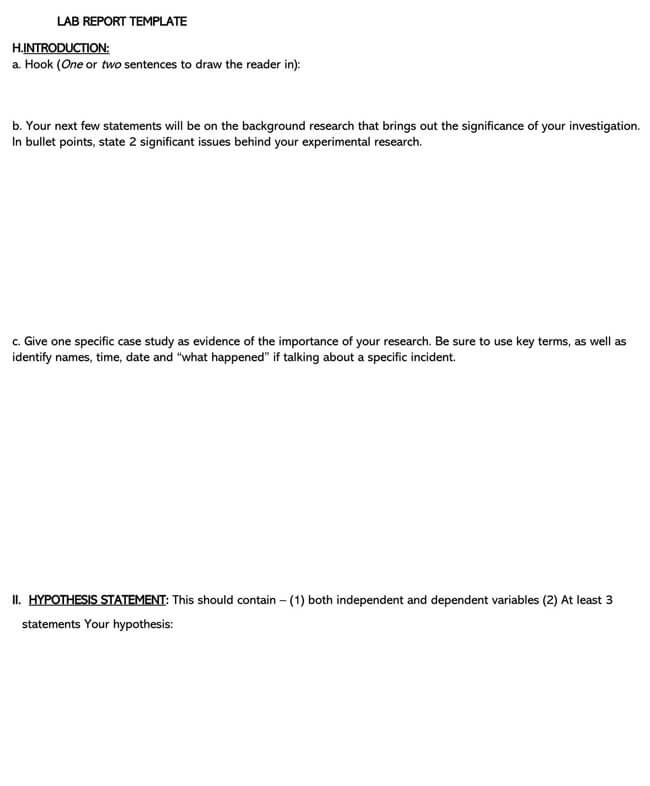
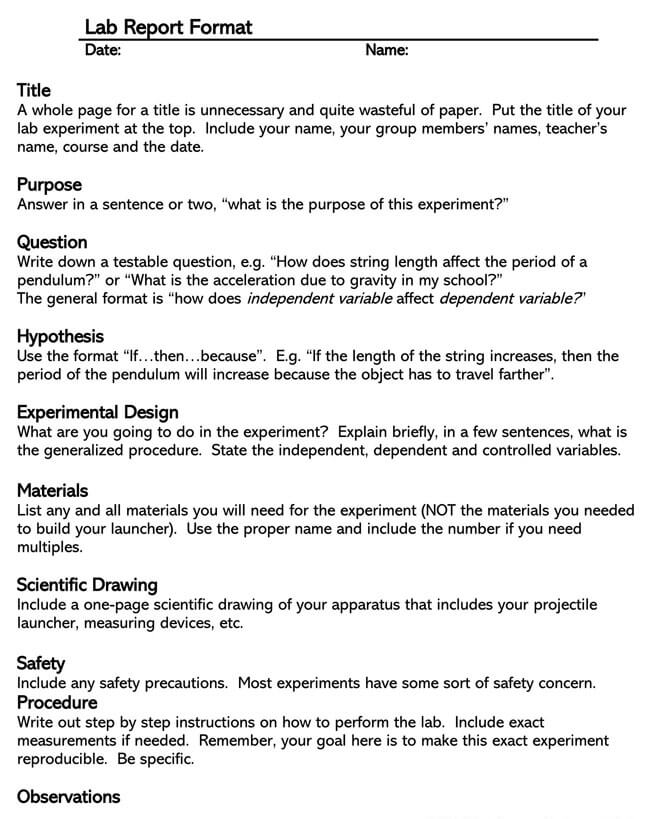
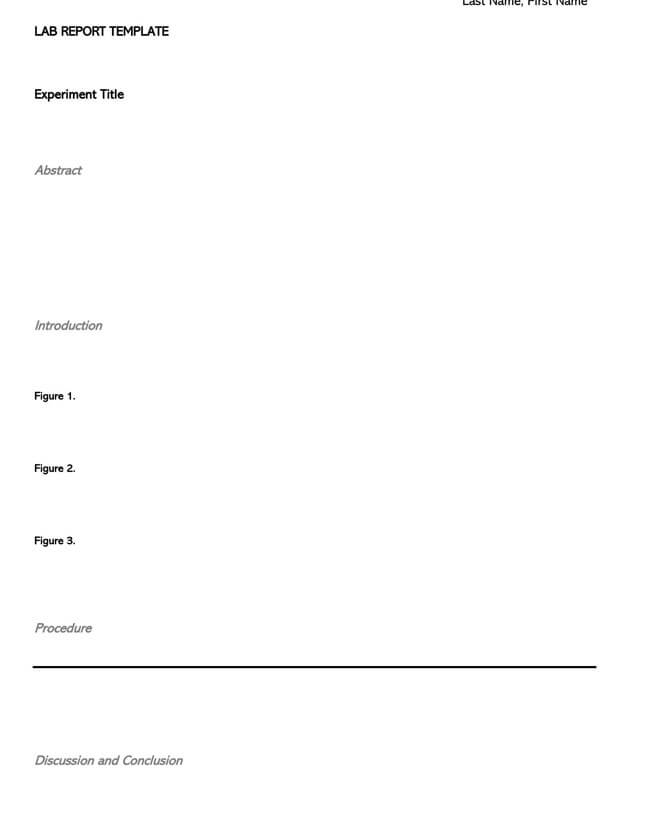
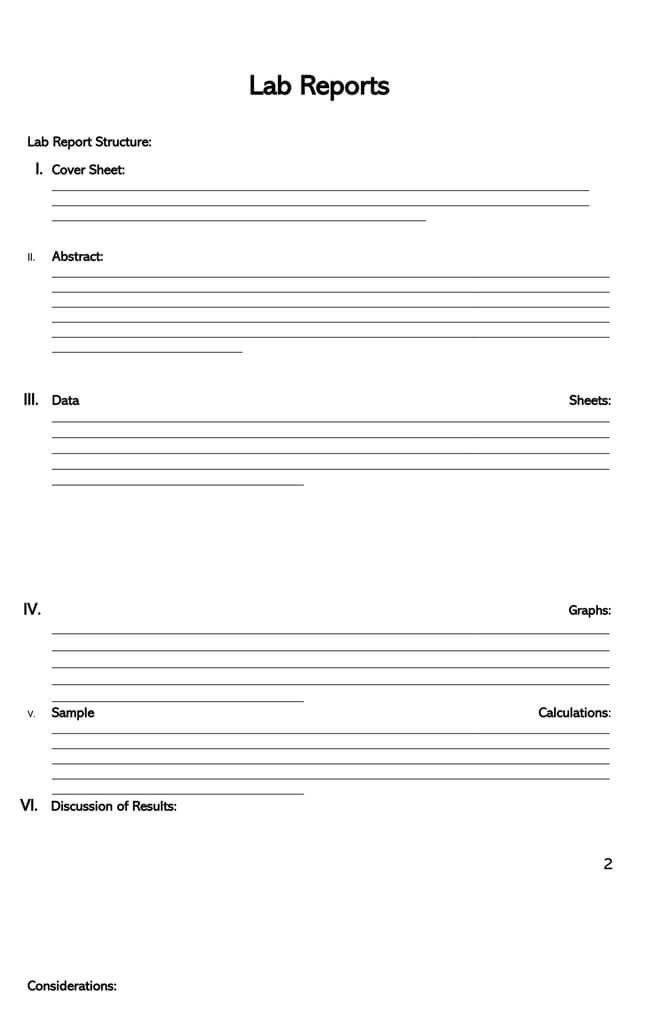
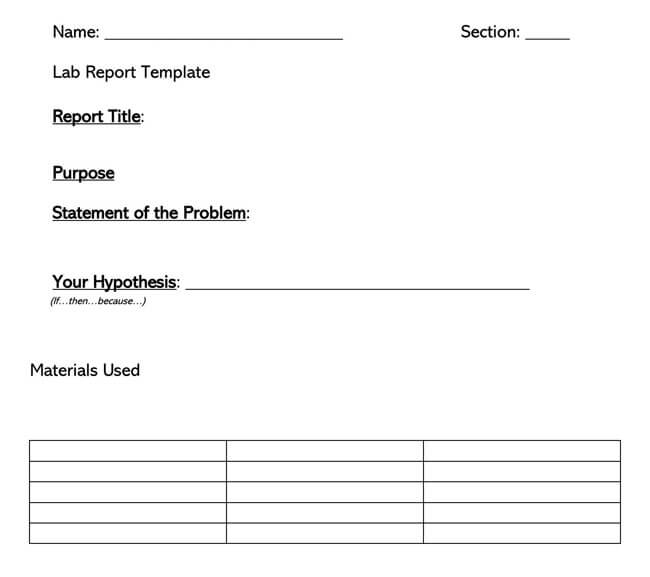
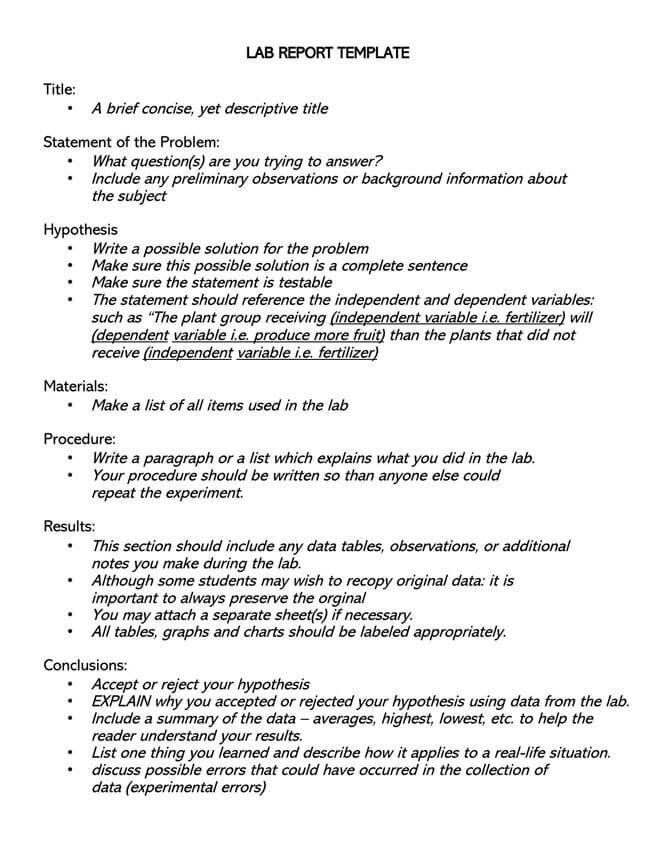

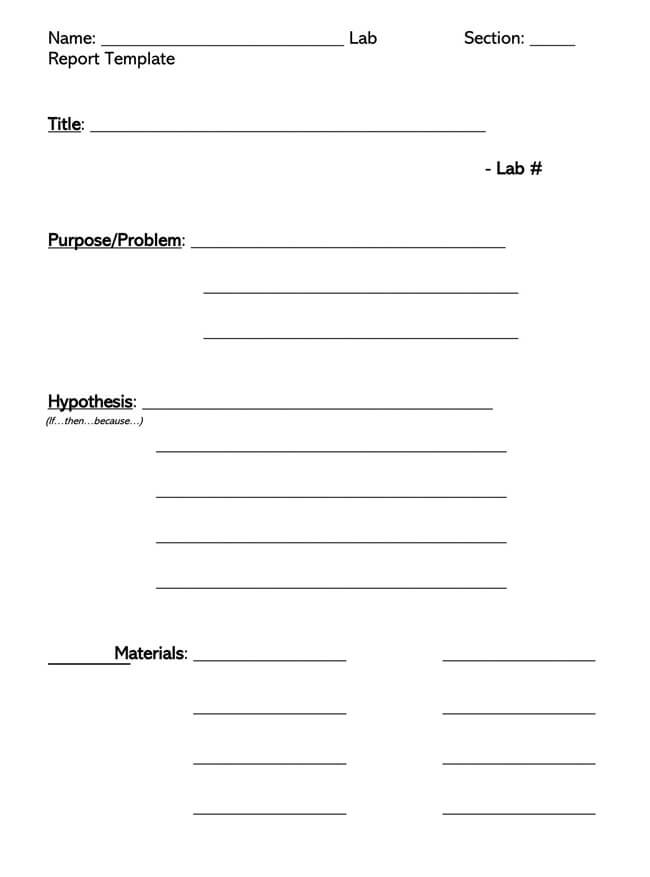
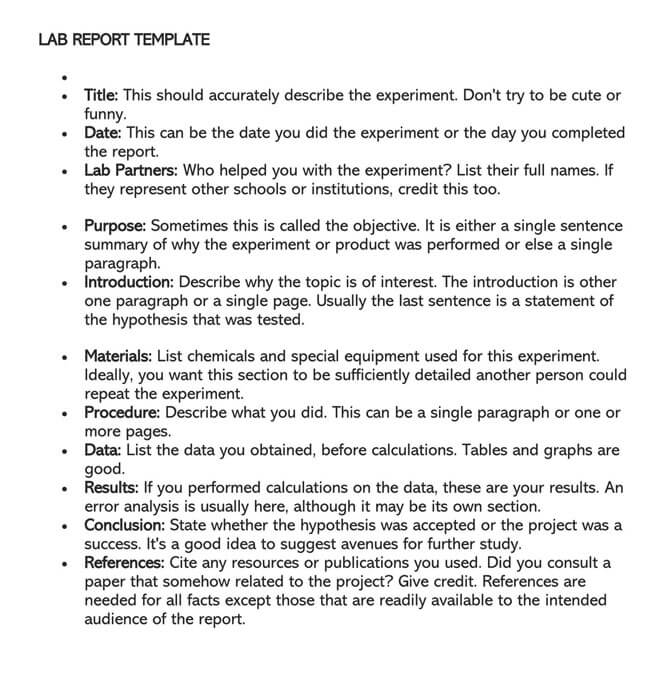
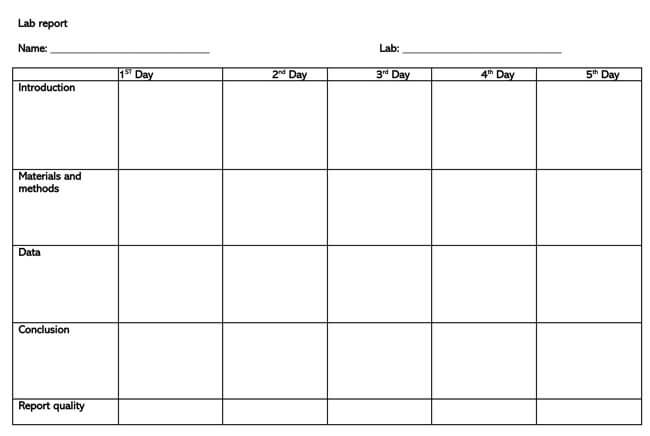
Elements of a Lab Report
Since it is a formal document, you must pay attention to the format and layout of the report when writing one.
The following elements are at the core of any properly written report:
Title page
The title page is an important section of a report. The title of the report must be brief and be able to indicate its contents. The idea behind the title is to present the crux of the investigation.
Point to Remember
Since it is supposed to be brief, you should aim for a maximum of ten words. Also, ensure that it is not written in the form of a question.
Other items that could be included on the title page include the names of the participants in the investigation, the instructor’s or supervisor’s name, and the date of the investigation and submission. However, these items are only included if requested.
Abstract
An abstract is basically the summary of the report, written in a concise and comprehensive manner. Abstracts are written in continuous form, not as a note. The abstract should be about 150 words.
An ideal abstract should be able to answer the following questions:
- What is the rationale for research?
- Who are the participants in the research?
- What methodologies have been used in the research?
- What are the major findings?
- What is the implication of the findings?
pro tip
Even though an abstract is placed at the beginning of a report, you should write it after writing the other sections of the document, as it is a summary of what has been investigated and thus cannot be prepared before all steps of the experiments are completed.
Introduction
The introduction section of the report is also called the “purpose” of the report, as it explains the objectives of the investigation. Ideally, the introduction section should explain why the research was conducted. Here, you need to start with a broad statement of the topic and explain the hypothesis. Remember, the introduction must also be as brief and concise as possible.
The following five steps can help you write an outstanding introduction section:
- Introduce the topic briefly and define key terms
- Explain the theoretical framework used in the research
- Explain the relationships between previous studies and your theoretical framework and how they influenced your research
- Explain how your current study seeks to address the literature gaps. You may show how your research aims to provide solutions to the problems of previous studies
- Mention the hypotheses, clearly stating what you are going to investigate and the expected results.
Materials used
This section of the report requires you to list all the materials used in your research. You should accurately list any equipment used in the research. However, you are not required to provide extensive details of the materials used; just a simple list is enough.
Methodology
Explain the techniques used to analyze the information. In this section, provide details about the methods adopted to conduct the research so that the reader can evaluate the validity and reliability of the research. You must vividly describe the details of the investigation process too.
It is critical to include enough details in the methodology to allow anyone to replicate the experiment and achieve the same results. The best approach to writing the methodology is to write it as a guide for someone else to use it in the lab to perform the same experiment. In addition to providing sufficient details, you should also include diagrams to illustrate the steps of the experiment.
Procedures
In this section, you must be able to show the steps taken to complete your experiment. It is important to be precise and to explain the procedure vividly and in detail so that someone could use it to perform the same experiment and achieve the same results. This section may need to have a diagram explaining the setup of your experiment.
Here are the useful things to note about this section:
- Accurately describe the process you followed during the experiment.
- Be as detailed as possible to allow replication of findings.
- Avoid adding extraneous details such as record sheets and debriefs.
Useful tips to guide you when writing the procedures section:
- Always assume the reader has no prior knowledge and relies on your explanation to replicate the experiment.
- Use the past tense in this section as it has already happened.
- Do not provide extra details or justification for choosing your method and simply state the steps of the procedure.
- While giving the details, be concise, but only to allow replication of the experiment; do not overburden the reader with unnecessary details.
Results
The results section of the report presents both descriptive and inferential statistics. In other words, the results section uses figures to present the observed data. You should not interpret the data, as that is done in the next section. In this section, do not present raw data. Use APA style while presenting the results.
Here are the writing conventions of APA style that you should follow:
- All the numbers are reported to 2 decimal places e.g. “0.61”. There are some exceptions to this rule i.e., numbers that can never exceed 1.0 ( e.g. r- values, p-values): reporting to 3 decimal places without including 0 before the decimal place, e.g. .002
- Percentages and degrees of freedom are reported as whole numbers.
- You should italicize all statistical symbols, which are not Greek letters e.g. t, F, SD, d, p.
- Either side of the equal sign should have spaces.
- You should put all the reports of 95% confidence intervals (CIs), lower and upper limits in brackets, e.g. “95% CI [7337, 102.23]”
Discussion
This section allows you to summarize all the findings from your experiment and relate them to your initial hypothesis. It is important to use plain English that does not have statistical jargon. It is this section that allows you to discuss the results of your experiment, comparing them to background studies related to the field.
The discussion section should also:
- Acknowledge the limitations of the study. However, you should ensure that the limitations can explain the result obtained. If the experiment achieved reliable results, be very careful when you mention the limitations as it will jeopardize the validity of your results. It is advisable to omit this section out if you cannot think of a unique variable explaining the results instead of the Instrumental Variables.
- Suggest ways of improving the study.
- Discuss the implication of the experiment’s findings.
- Suggest constructive ideas for future research based on your results. You could identify an area of limitation to be the basis of future research.
Finally, you should have a concluding paragraph that explains the key points of the discussion in 3 or 4 sentences.
Figures and graphs
The report should have figures and graphs presented in a separate section. All the graphs should have a descriptive title. Ensure that all graphs include the units of measurement. Always ensure that the X-axis has the independent variable while the Y-axis has the dependent variable. Always refer to the figures and graphs in the text of the report. Figures are labeled in chronological order, so the first figure is Figure 1.
References
This section contains all the sources cited in the report. Remember, you must use the APA formatting style for referencing. Take note of the referencing techniques used for the following:
1. Books
If you have cited a book in your report, it should be written using this format:
Author’s name. (year of publication). Title of work. Location: Publisher.
2. Journal articles
You should use the following format for referencing a journal article:
Names of all the authors, separated by a comma, (year of publication). Title of the article. Title of the journal, volume number (issue number), page numbers.
Quick Tips for Writing Good Lab Report
Here are some quick tips that you can use to write a proper report:
- Be brief: You should write concisely. Attempt to cover all the points in a few words and be straightforward.
- Write in the third person: When you are describing the procedure in your report, you should not use the first-person pronouns “I,” “we,” and “my.” Use the third-person perspective, as that is considered the appropriate style for scientific documents.
- Use correct verb tenses: The past tense is the correct tense to be used for scientific documents, as the experiment has already been conducted. However, when referring to equipment, you will use the present tense. Be mindful of how you use the verb tenses.
- Mention real results: Always write about the actual results of your experiment. Avoid the temptation to lie about the results to validate your hypothesis. If you did not achieve the desired results, you can suggest ways to improve them rather than lying about them.
- Do not copy a lab manual: Whilst a lab manual can be extremely helpful in guiding the purpose of the experiment, you should not copy it to describe your results. Your report should be written in your own words.
Frequently Asked Questions
It might take a college student at least 8 hours to write a good report. Take note that this is the time for writing reports, not performing the experiment.
Since these reports are formal, they should follow the formal writing guidelines. A lab report should use Times New Roman font size 12 and be double-spaced.
Yes, lab reports must have page numbers mentioned on each page of the document.
Final Thoughts
A lab report is a scientific document, and its formality and importance cannot be undermined. Whether you are writing one for a college assignment or a corporate purpose, you must ensure that it contains all the elements that make a comprehensive lab document. If you are unsure how to write one, you should download the templates to guide you.
